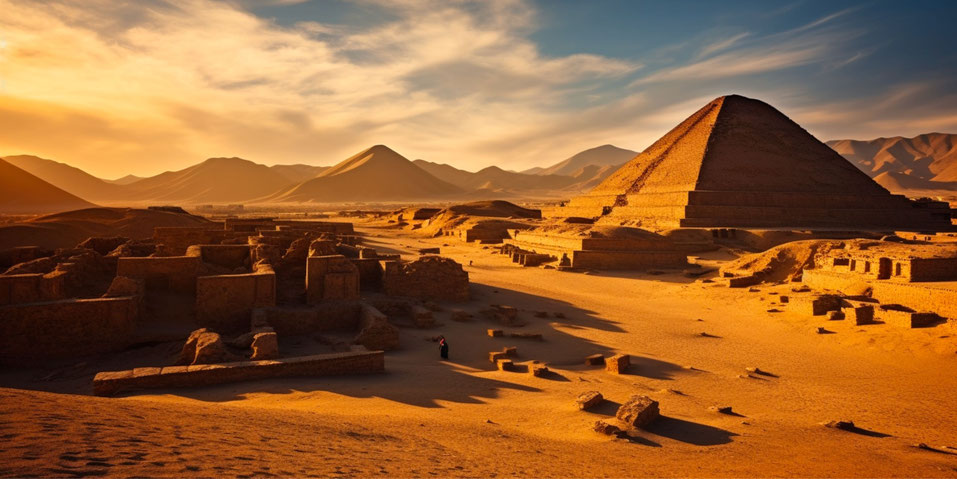Before the Inca: The civilizations of ancient Peru

Long before the Inca Empire rose to power and fame, the land we now know as Peru was home to many ancient civilizations.
These cultures, each unique in its own right, laid the groundwork for the Inca's eventual dominance.
The Caral Civilization: The First Builders
Around 5,000 years ago, the Caral civilization emerged in the Supe Valley, making it one of the oldest known cultures in the Americas.
The Caral people were masters at building. They constructed massive pyramids, plazas, and temples without using metal tools or pottery.
Instead, they relied on stone and their deep understanding of the land. Their city, Caral, was a bustling center of trade, religion, and art.
The Chavín: Masters of Art and Religion
Following the Caral, the Chavín culture arose around 3,000 years ago, flourishing between dated to around 900 BC and 200 BC.
Nestled in the highlands, the Chavín are best remembered for their stunning artwork and religious practices.
They carved intricate designs into stone, depicting powerful gods and mythical creatures.
The Chavín de Huántar, a religious center, became a pilgrimage site for many.
Here, ceremonies with music, dance, and perhaps even hallucinogenic plants, connected the people with the spiritual world.
The Nazca: Mysterious Desert Artists
In the southern deserts of Peru, the Nazca culture flourished between 200 BCE and 600 CE.
They are most famous for the Nazca Lines – enormous geoglyphs etched into the desert floor.
These designs, ranging from simple lines to complex depictions of animals like spiders and monkeys, can only be fully appreciated from the sky.
Why the Nazca created these vast artworks remains a mystery, but they might have had religious or astronomical purposes.
The Moche: Warriors and Craftsmen
On the northern coast, the Moche civilization thrived from 100 to 700 CE. Unlike the Nazca, the Moche left behind detailed records of their lives in the form of beautiful pottery.
These ceramics depict scenes of battles, ceremonies, and daily life. The Moche were also known for their goldwork and intricate jewelry.
Their society was structured, with rulers, warriors, priests, and artisans each playing a vital role.
The Wari and Tiwanaku: Twin Powers
Before the Inca, two major empires dominated the Andes: the Wari and the Tiwanaku.
Between 500 and 1000 CE, these two cultures expanded their territories, building roads, cities, and fortresses.
While they had different centers of power, with the Wari in the Ayacucho region and the Tiwanaku near Lake Titicaca, both cultures influenced each other in terms of art and architecture.
The Birth of the Inca
From the highlands of Cusco, a new power began to emerge around the 13th century: the Inca.
Drawing from the knowledge and traditions of the cultures before them, the Inca would go on to create the largest empire in pre-Columbian America.
Their story, filled with conquests, innovations, and a vast network of roads, would shape the history of the Andes and leave a lasting legacy for generations to come.
What do you need help with?
Download ready-to-use digital learning resources
Copyright © History Skills 2014-2024.
Contact via email
With the exception of links to external sites, some historical sources and extracts from specific publications, all content on this website is copyrighted by History Skills. This content may not be copied, republished or redistributed without written permission from the website creator. Please use the Contact page to obtain relevant permission.





